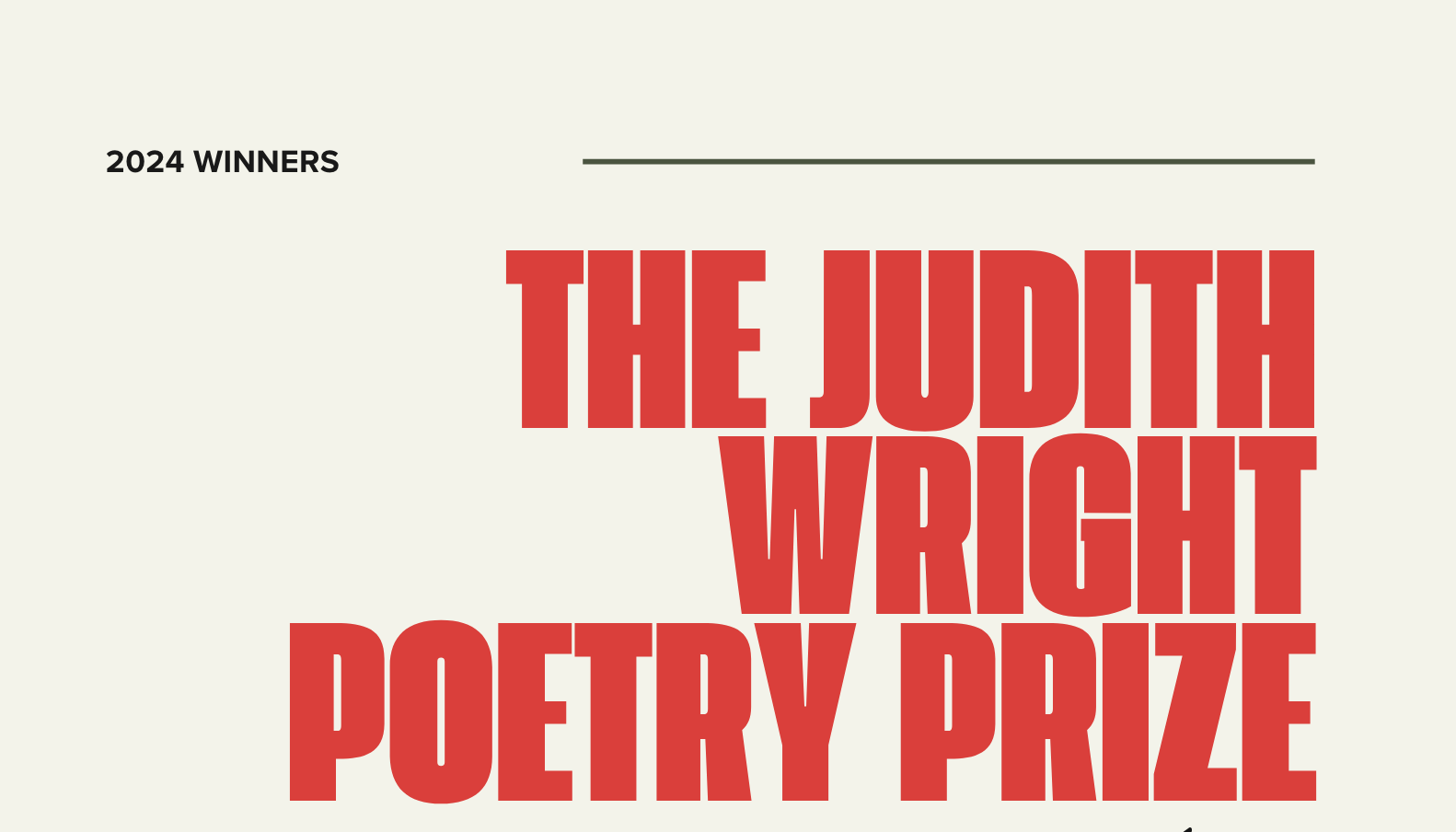Well, architects use pastiche—it sounds like a brand of glue, doesn’t it?—then movie-makers use montage, writers and artists and primitive shamans use bricolage—gluing things together. The word ‘collage’ is from the French word for ‘glue’. You see it for example in James Joyce’s Ulysses, where Joyce borrows forms—the stage play, the music hall, the romantic novelette. In a sense he’s parodying them, but he’s also using them. And you see it in Eliot’s, The Waste Land, and in Pound’s Cantos. It’s a tactic of classical modernism.
—John Tranter, interviewed by John Kinsella, 1991
My first real encounter with John Tranter’s work, outside the miscellaneous poetry journals that somehow found their way into the local public library, came about unexpectedly enough through the efforts of John Millett, editor of the soon-to-be-defunct Poetry Australia. Millett, successor to Grace Perry, was liberal with the Poetry Australia and South Head Press backlist and, along with books by Bruce Beaver, Noel Stock, Jennifer Maiden, Douglas Stewart and others, sent me a copy of Tranter’s debut collection, Parallax (1970). The cover was, and still is, striking in that Baader–Meinhof way that marks the hard leading edge of a new critical aesthetic. I’d written to Millett in 1989 as a jejune 16-year-old with some cockeyed notion that pastiching Baudelaire, Eliot and John Romeril might somehow speed the course of civilisation’s decline. Millett, a far more incisive reader of other poets than many have given him credit for, figured I ought to read more Tranter. Some years later, Michael Sharkey decided I needed to read John Forbes, but by that time the rot had well and truly set in. One of Tranter’s misfortunes has been to face constant comparison with both Forbes, a poet he himself championed, and John Ashbery, a late champion of Ern Malley (in which Tranter, of course, had a hand), whereas the temper of his writing arguably has more in common with that of, say, Robert Hughes (the art critic, not the plagiarist versifier). Hughes—in a register sometimes also found in Hugh Kenner and early David Antin—evolved a poetic syntax within a body of critical prose that skirts along the sardonic (but not, for that, insincere) underside of a post-Antipodeanism: inviting comparison with the later theatrical work of Patrick White, or the laceratingly ironic caged figures of Arthur Boyd, or Whitlam’s dismissal speech on the steps of Parliament.
But Tranter also has shades of Hannah Arendt: in a reproof of Fredric Jameson, pastiche in Tranter always indicates the potential of an ethical critique, one arising from the very speciousness of both ‘ethics’ and ‘critique’ in the poetico-political legacies of, for example, the New Left (and their alt.right avatars), as well as from the very banality that undergirds the frequent ‘ethical exceptionalism’ propounded by the avant-garde’s recuperators (as in Kant, the ethical imperative is reason’s—and therefore history’s—men in grey suits). (In this, Tranter’s aesthetic antitype would be John Brack: you can see such a tension rear up but then immediately abolish itself in the brilliant opening gambit of White’s The Living and the Dead—unfortunately the rest of the book doesn’t follow suit.) More than JH Prynne, whose advocates have tended to overdo the ‘ethicality’ that contrasts a rather austere body of sub-lyric poetry with Charles Olson’s progeny across the Atlantic, it’s possible to find in Tranter’s work an ethics which is that of pastiche itself: encapsulating what Derrida often evoked through the expression ‘responsibility to and for the other’. Contra Jameson, pastiche—from which all trace of historical/subjective responsibility was supposedly erased by the free play of ‘pure style’—nevertheless bears traces (even if these traces are of ‘nothing’ but the violence of deracination itself). It’s to these traces that Tranter (sometime more, sometimes less strenuously) responds, and in which respect his work might be regarded as exemplary of an anticolonialism that isn’t always self-evident because it is not self-advertised. Tranter’s writing, as observed by Mike Brennan, ‘is a dangerous cocktail of pastiche, subtlety and inversion, acute and acerbic observation detailing and deploying the beautiful trap of language’. Though it is not only detailing and deploying: the ‘trap of language’ is to assume any kind of semantic and therefore ethical situation at all which isn’t itself already a language-effect. (The Stewarts and McAuleys of the world, despite all their soapboxing ratbaggery, know this very well.)
In 1998, when I paid a visit to John Kinsella in Cambridge, almost the first thing he did was hand me a copy of Tranter’s experiment in ‘computer-assisted writing’, Different Hands, which had just been published by Fremantle Arts Centre (and dedicated, incidentally, to Hugh Kenner, ‘Without [whose] inspired investigations in the field of computer-assisted letter-group frequency analysis these texts could not have been written’). Different Hands is a book that raises questions other than the usual nonstarters about authenticity, authorship and aura. For example, where does the line get drawn between, say, conceptualism (a personality cult masquerading as posthumanist technopoetics) and those forms of radical montage in which the performed spectacle of conceptualist subversion is itself subverted? (While conceptualism disavows ethics, subversion is meaningless without it, even if there’s no ethical ‘subject’ other than language—but then, there are no concepts either.) I’ve used the word ‘temper’ in reference to Tranter’s writing advisedly. The pseudo-affective character of the Turing Test should alert us to the fact that ‘temper’ has nothing to do with inherently humanistic traits, while it’s possible to find traits of an equivalent kind in a Warhol silkscreen or an AI-generated collage. Nor is temper merely an artefact of a process, an idiosyncratic techne. What, for example, distinguishes the phrasal arrangements of Clark Coolidge and Stephen Rodefer from the microtonal compositions of Bruce Andrews from the serialism of Jackson Mac Low from the 12-tone scales of Bob Cobbing from the bagatelles of Frank O’Hara from the polyrhythms of Leslie Scalapino from the harmolodics of Ania Walwicz from the cognitive dissonances of Keston Sutherland and Francesca da Rimini … from Flarf? Even as pastiche in general instigates a mobile, distributed ‘consciousness’—veering between self-irony and self-aggrandisement, abnegation and propagation—it’s the degree of ‘temperamental’ difference articulated in this relation that is often the prime mover within Tranter’s poetic. (In this respect, another of Tranter’s antitypes would be Charles Bernstein, whose pataquerics are of a far more ruthless, epidemiological character.) Turing didn’t need to psychoanalyse his Universal Machine to know why it might want to ‘pass’ as human in the first place (as a homosexual in England later chemically castrated by court order, Turing already knew). There are times when the pasticheur in Tranter writes like his life depends on it, too. This isn’t the same thing as the clever-cleverness critics routinely accuse a certain kind of poetry of flaunting for merely egotistical effect (though it hasn’t prevented them in Tranter’s case from issuing exactly this verdict). But writing as if your life depends on it isn’t the same as making a career out of passing false coin and getting busted in flagrante delicto.
Pastiche in Tranter isn’t an extended rhetorical flourish, it’s a critical condition: the coin was already false and the pasticheur makes this known (it’s the ‘traditionalist’ critics who work the cover-up). Examples abound. For Starlight: 150 Poems (2010), UQP adopted this catalogue thumbnail: ‘Radical revisions, mistranslations and multilingual dealings: in Starlight, John Tranter destroys and rebuilds works by poets including Baudelaire, Mallarmé, Ashbery and TS Eliot.’ Variations of this could also apply to Crying in Early Infancy: One Hundred Sonnets (1977), Red Movie (1972), Dazed in the Ladies Lounge (1979) (according to one critic: ‘postmodernism in its purest, street-smart form,’ whatever that’s supposed to mean) and Heart Starter (2015) with, among other things, its punnery on Arnold’s ‘Dover Beach’, re-languaged in two ‘terminal’ versions as ‘Grover Leach’ and ‘See Rover Reach’ (terminal here referring to the practice of stripping the work of other poets down to their line endings and reverse-engineering a species of countertext out of it). Of the individual pieces, most paradigmatic is perhaps Tranter’s long poem ‘Ode to Col Joye’ (1979), constructed from (in this case ‘attributed’) ventriloquotations of John Forbes, Alan Gould, Frank O’Hara, Laurie Duggan, et al.: ‘it’s not a Les Murray day, though yesterday / Doug Anthony’s name was all over the news-stands / and you found a mysterious copy of The Land / on your porch, bleached by the sun and rain; / and it’s not a Bob Adamson day, / though last week a bank robber / ran amok and was shot to death just / five blocks away, under a windy Sydney sky …’ Tranter’s practice here differs from that of other ‘generation of ’68’ poets, like Duggan and Adamson: despite appearances, Tranter’s work is rarely parodic in any straightforward sense. His im/personations also differ from Brett Whiteley’s contemporary ‘portraits’ of Van Gogh, Bacon, Rimbaud by not only not reducing to the technical monotony of caricature but by affecting a self-erasure that Whiteley perhaps sought but rarely achieved, despite copious layering of citation (the temper of Whiteley’s line remains constant and ultimately his pastiches are a vehicle for self-analysis and projection).
Commenting on The Alphabet Murders (1976; after RD FitzGerald), Peter Pierce calls these im/personations a redefining of tradition. That isn’t to say Tranter advances a theory of pastiche in any conventional sense, nor does he pastiche theory, in the American style, in lieu of developing a line of poetic argument (so much L=A=N=G=U=A=G=E ‘theory’ is like Greg Corso ‘theory’, which is to say, jive). The work of pastiche, here, is itself insuperable from a theorising that begins with a form of cohabitation, à la Derrida, of ‘going over’ to the ‘other side’ (including that of the so-called tradition). In Heart Starter, for example, Tranter riffs off the end words of other poets’ texts, like a jazz soloist working from the changes, staying outside the melody but swinging with the same impetus. (Or you could just as easily say: like an enragé on a Paris boulevard ‘redefining’ the cobblestones.) In its deconstruction of the expropriative act, this kind of ‘playing-around’ decoys the omniscient earhorn of the institutional brain. If this is what passes for goosing the ‘tradition’ (which is like having a cop checking your cabaret license), then Tranter’s strategy is like throwing a feather duster among a convocation of stool pigeons and watching the cats fly. Thus, Tranter winks, ‘not just an impulse / out of the past; [pastiche] is a progressive movement / overtaking the present and helping carry it / into the future … poetry itself / always sorts out the poets it requires / and gives the best of them their orders’. Nothing could be further from the topical aboutism of what sometimes passes for radical ‘content’ these days, flashing credentials like a session musician working at scale (Claude Shannon, the progenitor of information theory, could just as well have been quoting Ezra Pound being paraphrased by Marshall McLuhan when he said you can compress ‘content’, but you can’t compress information: i.e. the ‘new’ isn’t the image, it’s the imagist-economy, like the medium is the massage). This reminds of an incident recounted by Élisabeth Roudinesco in her biography of Jacques Lacan. Vis-à-vis a famous bit of May ’68 graffiti found on a Sorbonne blackboard, Lacan is said to have observed: ‘I don’t consider it at all correct to have written that structures don’t go out onto the streets, for if there’s one thing the events of May prove, it’s precisely that they do.’ Likewise, the operations of pastiche (which are equally endemic to authoritarian claims of cultural power and those fetishes of authenticity presumed to be exempted from it) are always to be found in any truly ‘radical’ poetics, whether written in the street, across a blackboard, or on the page.
26 November 2022, Beja



